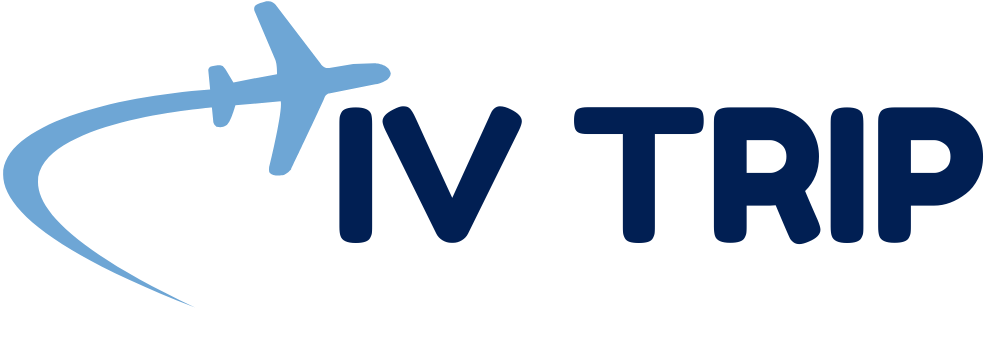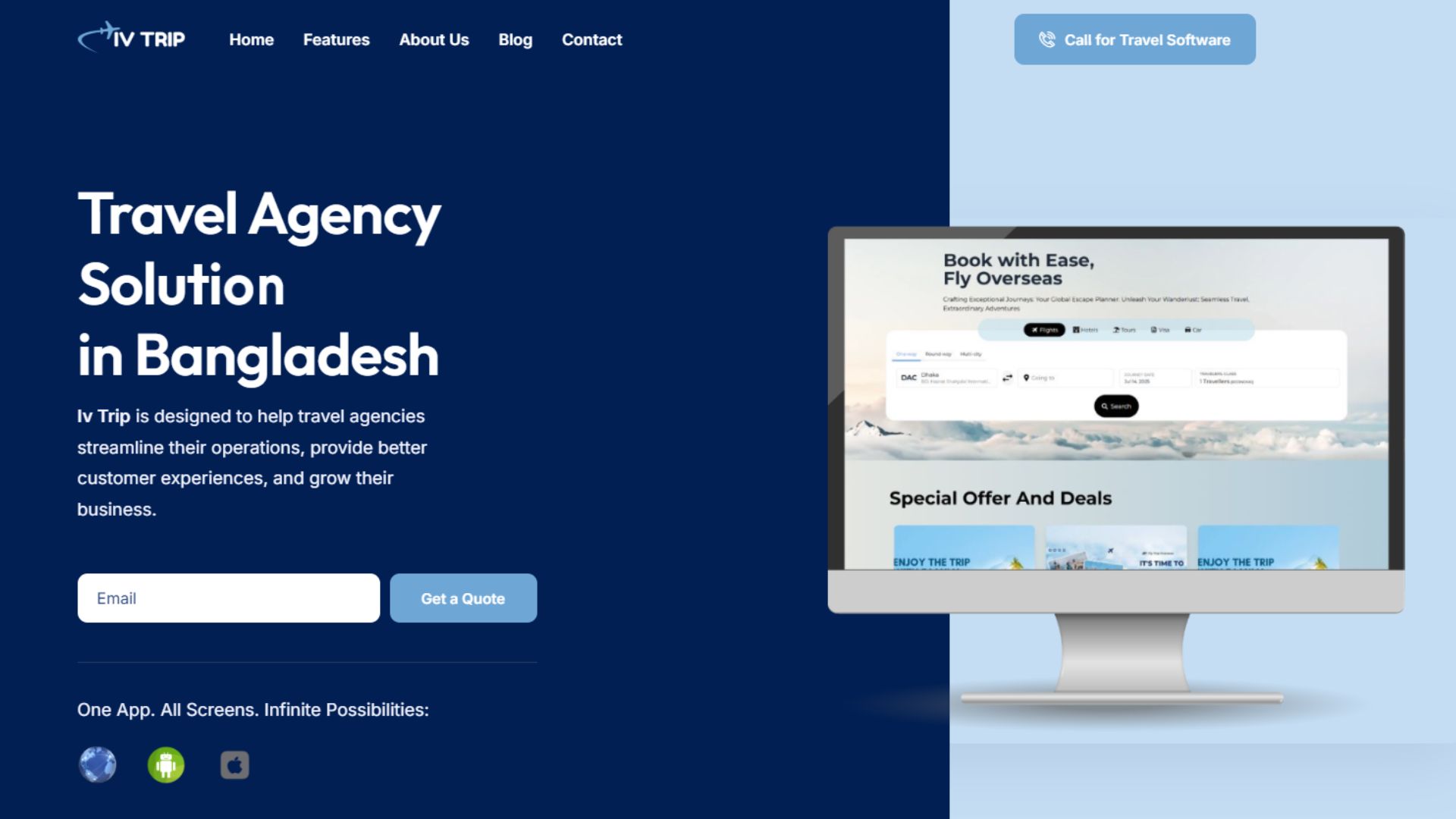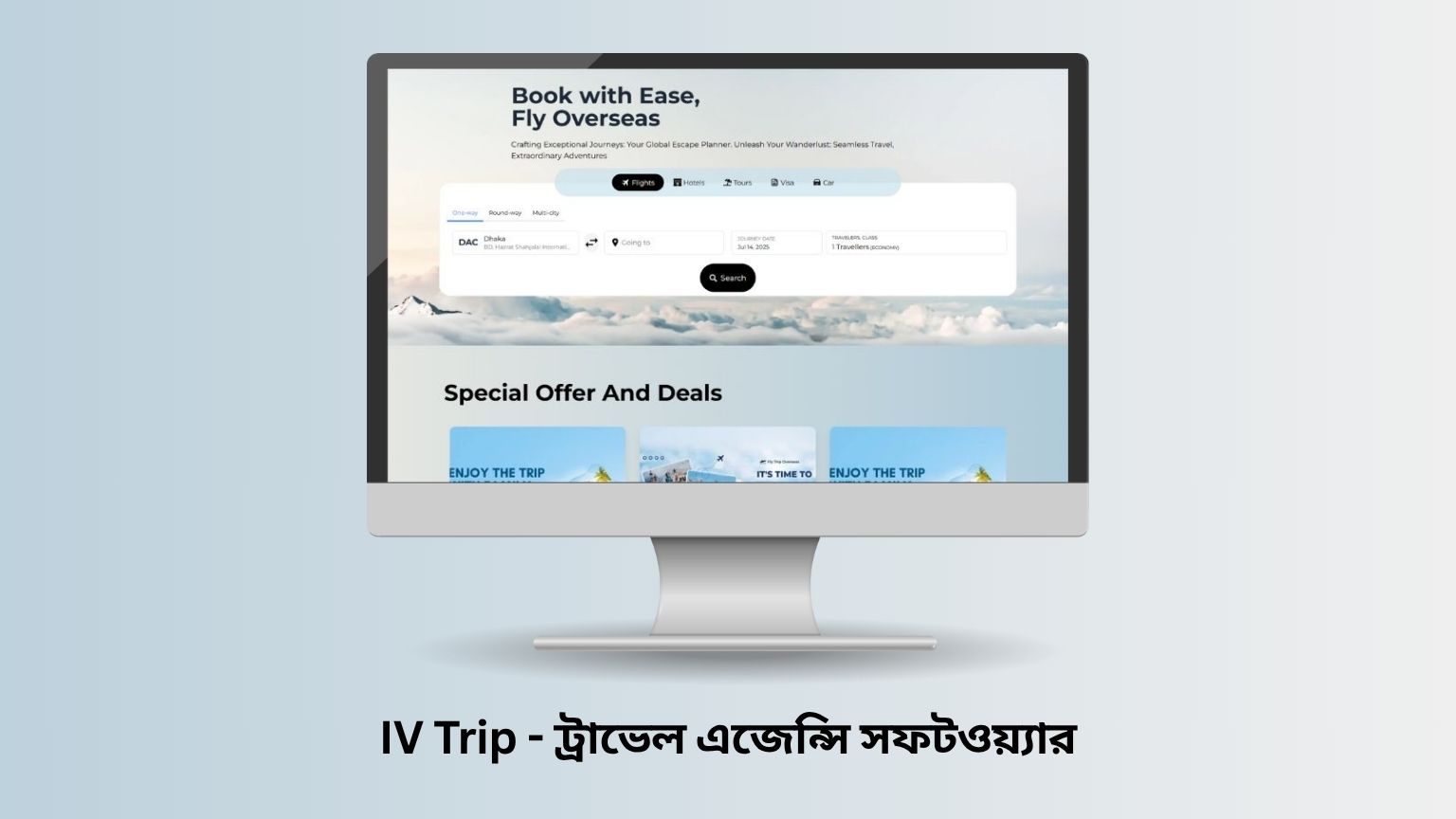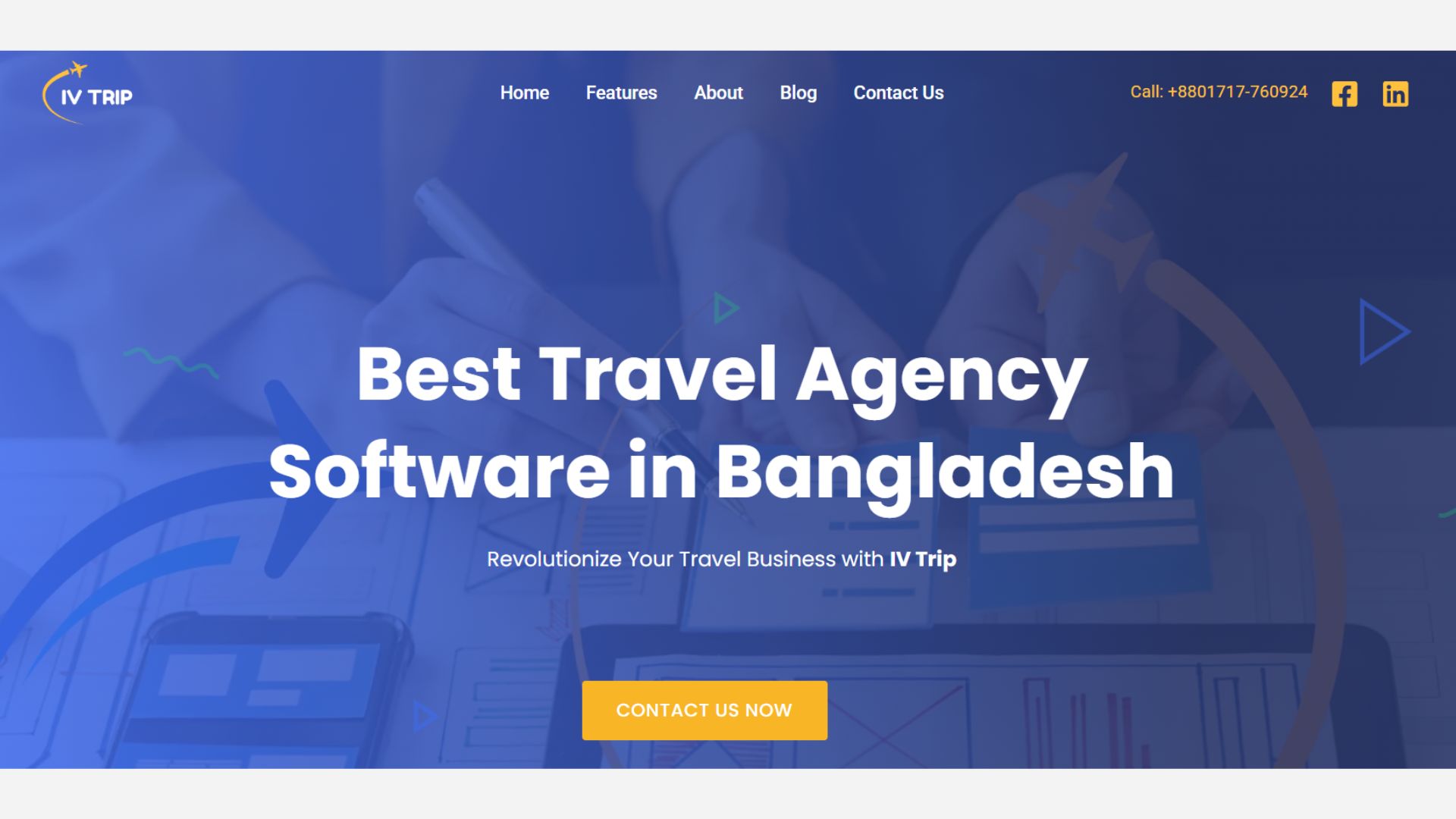All-in-One Booking Management: Flights, Hotels, Tours in One Platform

Managing travel bookings across multiple systems is a major challenge for agencies today. An all in one booking platform brings flights, hotels, tours, and other travel services together in a single system. In other words, it’s like running a complete Online Travel Agency (OTA) that “offers flight bookings, hotel reservations, tour bookings, or any other travel-related service online”.
This unified approach simplifies work for agents and customers alike. Instead of juggling separate tools or websites, everything happens through one booking management platform – from searching inventory to processing payments. For example, PHPTRAVELS promotes a “complete travel technology platform” where you can “manage flights, hotels, tours, and cars with real-time global connectivity”. By centralizing services, agencies can cut errors, save time, and give travelers a seamless experience.
In practical terms, an all-in-one system means an agent or customer logs in once to search and book multiple travel components. According to industry experts, leading travel platforms have “a unified booking engine for flights, hotels, car rentals, and tours with real-time inventory,” so agents can search, compare and book services seamlessly.
It also means integrated CRM and payment tools – everything from quoting a flight to invoicing a tour happens inside the same portal. In short, a true all in one booking platform combines all essential travel agency operations – flights, hotels, tours, packages, payments, and customer management – into one cloud-based solution. This contrasts with older, fragmented setups where, for example, flights might be booked via one system and hotels via another.
Why Choose an All In One Booking Platform?
Travel agencies benefit immensely from a unified booking management platform. First, it streamlines operations. Tasks like inventory updates, confirmations, and invoicing can be automated across all products. For instance, IV Trip’s system “automates tasks like confirmations and reminders, streamlining operations and boosting productivity”.
This eliminates manual double-entry and reduces mistakes (e.g. double-bookings), because the system maintains one set of data in real time. Second, it provides real-time visibility into bookings. Agents can see up-to-the-minute availability and pricing for flights, hotels, and tours from multiple suppliers. According to one guide, customers today expect to book anytime on any device – an all-in-one platform ensures your site is always up-to-date and mobile-friendly.
Moreover, unified systems greatly improve customer experience. Customers enjoy a single checkout for multi-part trips and instant confirmation of all components. For example, Wyndham Hotels’ new travel package platform allows members to “book hotels, flights, car rentals, transfers, and activities – all in one go”. This convenience increases customer trust and loyalty.
Internally, agencies gain a comprehensive view of bookings and analytics. By consolidating data, agencies get rich insights on sales trends, best-selling destinations, and customer preferences. As one travel platform points out, a unified system offers “a comprehensive view of travel data, facilitating better decision-making and strategic planning”.
- Efficiency & cost savings: Agents log into one dashboard to manage all bookings, cutting training time and software costs.
- Higher accuracy: Real-time inventory prevents overbooking. Integrated payments and invoicing reduce errors.
- Improved profitability: Bundled booking means agents earn commissions on combined packages. For example, real-time commission displays in one platform help agents “amplify commission earnings” on each sale.
- Better customer service: Instant responses and unified customer records (CRM) mean faster service and personalization. Analytics dashboards allow agencies to target promotions and plan packages that boost repeat business.
In short, a single booking management platform helps agencies work faster and smarter, while offering travelers a smoother experience. Internal data flows smoothly between modules (booking, CRM, finance, etc.), so nothing falls through the cracks. As one report notes, modern travel software “supports multi-channel booking” and centralizes everything from itinerary planning to analytics – a game-changer for productivity and scalability.
Key Features of a Booking Management Platform
A true all-in-one travel platform includes a range of integrated features:
- Unified Inventory & Search. A core feature is real-time connectivity to flights, hotels, and tours through GDS and API integrations. Agents can search and compare all suppliers at once. For example, IV Trip “aggregates flight, hotel, car and tour reservations in one dashboard,” allowing searches across multiple sources instantly. This means one booking engine, not many.
- Dynamic Package Builder. Agents often need to bundle travel products. All-in-one platforms include a package or itinerary builder. They let you mix and match flights, hotels and activities into custom deals. The platform calculates pricing instantly, providing “customizable vacation packages” to suit each client.
- Centralized CRM. Integrated customer management tracks traveler profiles, past trips, and preferences in one place. A powerful travel CRM automatically logs every inquiry and booking. It can send follow-up emails or targeted offers based on traveler type. For instance, IV Trip’s CRM “automates follow-ups, sends targeted offers, and tracks leads,” improving conversion and retention.
- Multi-Channel Distribution. Good platforms connect with OTAs, social media, and affiliate sites. Inventory is pushed to multiple channels to maximize exposure. This broadens an agency’s sales reach beyond its own site. Top solutions even offer marketplace integrations (as noted for TourCMS and others) so agents tap into global booking channels easily.
- Secure Payments & Accounting. Embedded payment gateways handle multi-currency transactions. Invoicing and accounting modules tie into booking data. For example, agents can generate a consolidated invoice for an entire trip at checkout. This integration simplifies finance – no more manual billing spreadsheets.
- Real-Time Analytics & Reporting. Dashboards show sales by flights, occupancy rates, revenue by tour, and customer demographics. Agencies can see which itineraries sell best and forecast demand. Analytics features (charts, graphs, filters) help refine marketing and pricing. This insight is much harder with siloed systems.
- Mobile-Friendly Design. Both agents and customers can access the system on smartphones or tablets. Modern platforms are built with responsive design for high performance on any device, ensuring a seamless experience for on-the-go users.
These features work together as a single booking management platform. For example, while searching a flight on one screen, the agent might immediately add a hotel and tour to the same reservation. The system automatically updates availability and pricing for each component.
Platforms like PHPTRAVELS emphasize this unified approach: “Manage flights, hotels, and tours on one platform with speed, accuracy, and scalability”. In practice, this means avoiding disjointed workflows – one platform handles it all.
All-In-One Travel Agency Software: Industry Examples
Many travel software solutions now advertise all-in-one capabilities. For instance, Ensemble Travel’s ADX platform proudly calls itself an All in One booking engine for travel advisors. It integrates Sabre and Amadeus so advisors can book air and hotels with consolidated billing. Similarly, WorldVia’s TRIO platform “engineered for power, designed for ease,” combines air, hotel and car bookings on one platform.
It offers features like real-time commission displays and exclusive hotel programs, all centrally managed. These examples illustrate how industry leaders move toward unified systems.
In the B2B travel space, tools like PHPTRAVELS and Travelport also champion integrated booking platforms. PHPTRAVELS (a popular travel script) markets itself as a “complete travel technology platform,” with modules for Flights, Hotels, Tours, Cars and more.
It highlights 3 million+ bookings done via its unified engine. Travel industry analyst ORX notes that top platforms in 2025 offer “Unified Booking and Reservation Systems” with CRM and itinerary planningl. The takeaway: agencies and OTAs are moving away from one-off tools to comprehensive SaaS platforms.
For travel agencies specifically, Implevista’s IV Trip is a regional example of an all-in-one solution. IV Trip “is an all-in-one cloud platform combining booking engines (flights, hotels, tours), CRM, finance, marketing automation, and analytics”. Its feature set includes a consolidated booking dashboard, mobile-responsive design, and local currency pricing for Bangladesh.
As one blog explains, IV Trip “bundles everything an OTA needs in one package – from real-time inventory to CRM and marketing”. This makes it easy for agencies to handle multi-component bookings without switching systems. In a recent comparison, IV Trip is described as an “all-in-one solution” that unifies booking management, CRM, finance and analytics on a single platform.
When evaluating software, agencies often compare IV Trip to other global players. IV Trip’s advantage is tailoring to the local market (e.g. BDT pricing, local support), whereas global platforms (Sabre, TravelPerk, etc.) may excel in scale. Still, the core benefits remain the same: streamlined workflows, all inventory in one place, and integrated back-office tools.
Best Practices for Implementing an All in One Booking Platform
Adopting an integrated booking platform is not plug-and-play – there are best practices to follow. First, choose a cloud/SaaS solution so updates roll out automatically and the system scales easily. Ensure the platform connects to your required Global Distribution Systems (GDS) and APIs for flights, hotels and tours.
Next, focus on data migration and training: consolidate your supplier contracts and inventory data into the new system to go live with rich content. Train staff on the new workflows, emphasizing the unified booking process (e.g. creating combo packages in one go).
Make mobile-friendliness a priority. As noted, “over 85% of OTA bookings are made via mobile devices” in many markets. Verify that your booking platform is fully responsive and optimized for Core Web Vitals (fast loading, interactivity, visual stability) to avoid losing customers.
Also plan for change management. Communicate the benefits of single-system booking to your team: less duplicate work, better reporting and happier clients. Set up your financial and CRM integrations so that bookings flow seamlessly to invoicing and customer databases. Most importantly, have a staging phase: test the end-to-end booking cycle (search flight, add hotel and tour, pay and invoice) thoroughly before fully switching over.
Finally, link your marketing and support. Use the platform’s built-in tools (email templates, loyalty programs, etc.) to promote packages and automate follow-ups. For example, built-in email campaigns in IV Trip can auto-segment customers and send targeted offers. By combining technology with solid processes, an all-in-one platform can transform how you run your travel business.
Internal Resources and Further Reading
For more detailed guidance, see Implevista’s resources on integrated travel booking:
- How to Start an Online Travel Agency (OTA) with IVTrip – a step-by-step guide to launching a unified OTA portal.
- Tour Booking System: The Key to 24/7 Travel Agency Growth – covers real-time tour and flight bookings for agencies.
- IV Trip vs Other Travel Agency Software – compares integrated booking solutions and highlights IV Trip’s all-in-one features.
These articles, along with our best travel agency software guide, illustrate how a booking management platform centralizes flights, hotels, tours and more. We also recommend reading about digital marketing for tourism in Bangladesh (via Implevista’s Digital Agency blog) to learn how to drive traffic to your unified booking site.
In summary, consolidating all booking channels into one platform is a proven strategy for modern travel agencies. By using an all-in-one system, agencies can handle flights, hotel stays, and tours from a single dashboard – improving efficiency, accuracy, and customer satisfaction.
Ready to streamline your travel agency? Contact the IvTrip team for a demo or explore our features to see how our all-in-one travel agency software can elevate your business. Don’t forget to subscribe to our blog for more travel tech insights and read our OTA startup guide for tips on launching your portal.
FAQs
Q: What is an all in one booking management platform?
A: It’s a unified software system where travel agents can book flights, hotels, tours (and other services) from the same interface. Instead of separate apps for each travel product, all inventory and tools live on one platform.
Q: How does an all in one booking platform benefit travel agencies?
A: Agencies gain efficiency and accuracy. Bookings update in real time (avoiding overbooking), and tasks like invoicing or confirmations are automated. This reduces manual work and errors. Agencies also get consolidated data for analytics and better customer management.
Q: What features are typically included?
A: Key features include real-time inventory search (flights, hotels, tours), integrated payment processing, customer relationship management (CRM), package/itinerary building, multi-channel distribution, and reporting dashboards. Modern platforms also offer mobile-responsive design and automation tools.
Q: Can I book flights, hotels, and tours in a single transaction?
A: Yes. All-in-one platforms allow multi-component bookings. For example, you can search a flight, then add a hotel and tour to the same reservation, all with instant confirmation. This unified workflow is a hallmark of integrated booking systems.
Q: What is travel agency software?
A: Travel agency software is a tailored ERP solution for travel businesses. It handles reservations, customer data, payments, and back-office tasks. All-in-one travel agency software (like IV Trip) packages these modules together so agencies can manage everything from search to check-out in one system.
Q: Do integrated platforms include CRM and marketing tools?
A: Yes. Leading platforms embed CRM to track client profiles and preferences. They often include email marketing, automation for follow-ups, and analytics. For example, IV Trip’s CRM can “auto-send reminders and group customers by interests” to improve sales and retention.
Q: How does real-time booking work?
A: The system connects to global distribution systems (GDS) and supplier APIs. When an agent searches, the platform queries these sources live. It then shows up-to-date rates and availability. When a booking is made, it’s immediately confirmed across the system. This ensures accuracy and instant ticketing.
Q: Why do I need a unified booking platform instead of separate tools?
A: Separate tools mean manual transfers and risk of errors. A single platform removes data silos, giving you one source of truth. It simplifies training (one interface) and lets you handle multi-leg itineraries easily. Plus, it often ends up being more cost-effective than paying for multiple point solutions.
Q: How does an all in one booking platform improve customer experience?
A: Customers get one-stop shopping for their trip. They receive one consolidated itinerary and payment, rather than juggling separate confirmations. This convenience builds trust. Instant online booking (24/7 access) also means higher satisfaction and loyalty.
Q: What should I consider when choosing travel booking software?
A: Check that it has integrated GDS/API connections for the products you need (air, hotel, tours, etc.) and robust CRM and payment features. Look for mobile-friendly design, local support, and flexible pricing tiers. Reading comparison guides (like Implevista’s IV Trip vs others) and trialing demos can help you find the best fit.
